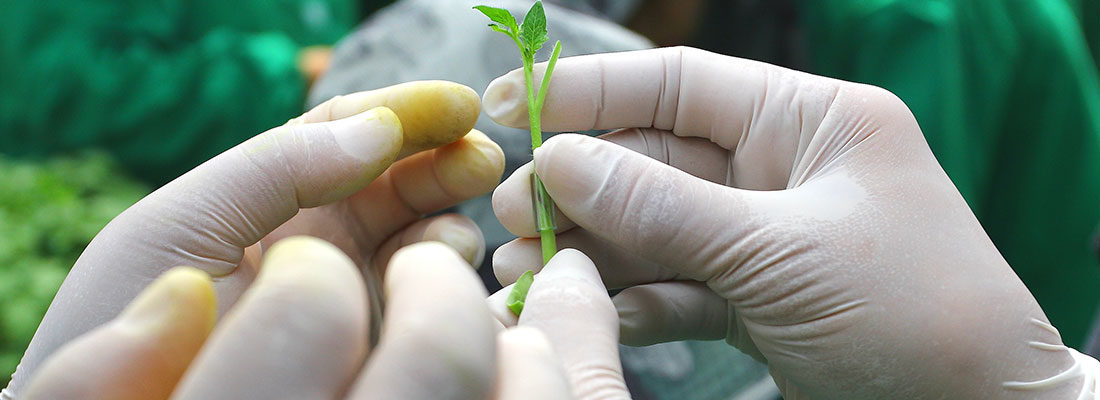When grafting vegetable seeds, companies prefer to use women as they have smaller and more precise hands. As demand for grafted seeds is on the rise, companies are searching for alternatives that allow for an effective work line and high quality products. While many companies still prefer to use human labour for this process, more and more growers are considering other options such as automating the work. Thanks to vision technology, more automated options are becoming affordable and common among growers.
Grafting is the process in which two plants are joined into one. Grafted plants utilise the rootstock (bottom part of one plant) and the scion (tender shoot) from the top of a different plant.
Helper Robotech, a Korean manufacturer, is a company that develops machinery and solutions in which the grafting process is made easier for the people who have to work under such strenuous conditions. The company has developed a new system that allows the grafting progress to visualised on a screen and assist with the seeminly microscopic process. Jeremy Park, the company’s overseas marketing direction explains "We manufacture various horticulture and nursery machinery like Auto Seedling Systems and Grafting Robots. Especially the Grafting Robot is a hot topic of discussion, as many nurseries are interested in automating this labour intensive process."
Park went on further to illustrate the grafting process and how it works. "It requires a very steady and precise hand. Every plant is unique and every single rootstock and scion has its unique shape and bent. It requires a human eye to precisely join the two minuscule parts. For this reason, nurseries often prefer to use large quantities of women to graft the plants. They have smaller and more precise hands than men. However, with the increasing demand for grafted seedlings, many nurseries struggle to find the right labourers. As well as this grafting can become quite an expensive process with so much human labour involved."
Using a vision camera, the grafting machines takes a photo of the cut surface of the scion and rootstock. Built in software analyses the bends and provides the servo-motor with how the two joints can be connected. The most impressive thing about it is the error rate is 1/100mm, all while occurring at very high speeds.
The new grafting robot is able to graft both cucurbiataceae and solanaceae and is set to be the next big tech item that every grower needs in their operation. The robot is winning traction in nurseries all over the world and is deemed to be popular in the watermelon and tomato crop growing sectors. "We export our machines to growers located in countries around the Mediterranean sea but also to the Middle East and North America."
How would you feel with the months hottest horticulture technology tips, trends and info at your fingertips? Sign up for our monthly newsletter to make sure you stay ahead of the game! #AskGreenTech






